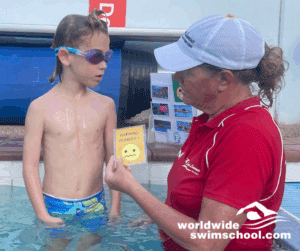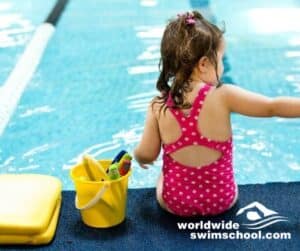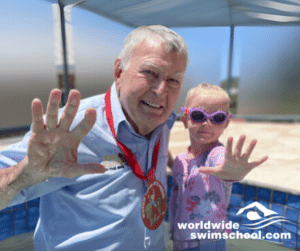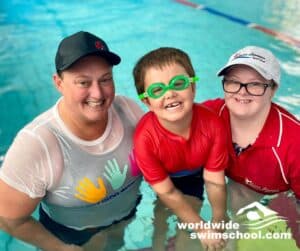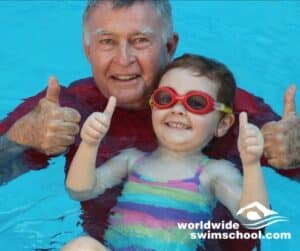Teaching backstroke requires gradual skill development. As each skill is mastered, the next skill is introduced, which maintains the building block approach.
In 1904, Walter Brack from Germany won the first recorded Olympic 100 backstroke in 1 minute 16.8 seconds. In fact, Germany were first, second and third with Geog Hoffmann and Geog Zacharia filling the minor placings.
Backstroke is probably the easiest swimming stoke to learn. Once the basic float is learned, which is the corner stone of all good swimming technique, the propulsive skills of kicking and arm pulling action can be added. The face remains out of the water at all times and the breathing, which often causes problems in learning to swim freestyle, is unrestricted in backstroke swimming. With good skill development, and a graded teaching program, all children have the opportunity to learn the backstroke swimming action correctly.
Laurie’s Method of Teaching Backstroke
The Laurie Lawrence method of teaching backstroke is a comprehensive method of gradual skill development. As each skill is mastered, the next skill is introduced, which maintains the building block method of teaching swimming.
Learning to swim should be a positive experience for both parent and child.
There are a number of skills that you need to understand, and learn how to teach important elements of the learn to swim process, even if you are a parent.

Skills to Improve Backstroke
Once you master the following, it will be easy to complete the breaststroke. Follow the simple guide below to help you achieve this stroke. For more information on common faults with backstroke, and how to correct them, read our blog here.
- Back Floating
- Assisted back Kicks
- Unassisted back kicks
- Good Backstroke arms
- Importance of Backstroke drills
- Pullbouy Drills
- Ready for Backstroke
To learn more about how you can perfect backstroke, and other skills, find out more about our Swim School Hub here.

